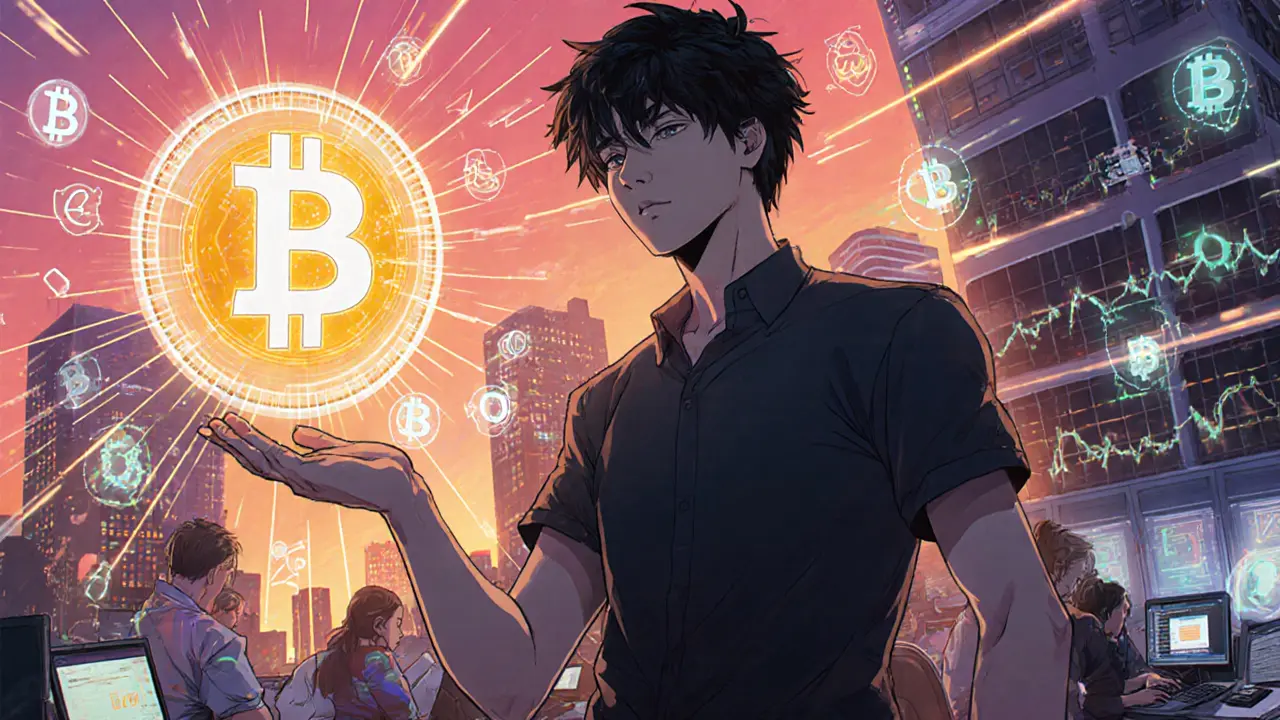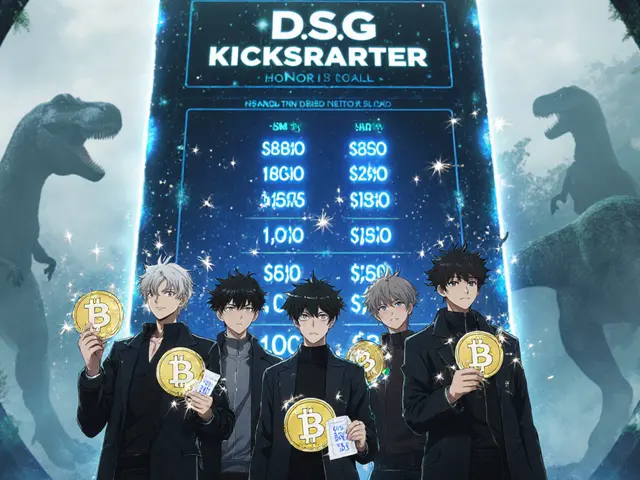Crypto Exchange Risk Assessment Tool
Risk Assessment Result
Kuna Exchange Comparison
As a reference point, Kuna had the following characteristics:
- Regulatory Status: Ukrainian license; limited global compliance
- Reserve Policy: 100% reserve
- Support Channels: Chat bot only (no phone)
- Withdrawal Speed: Delays of 3+ days
- User Base: ~600,000 users
When it launched in 2014, Kuna exchange was a Ukrainian cryptocurrency platform founded by Michael Chobanian. It quickly became Ukraine's first public crypto‑asset exchange, attracting over 600,000 users across Eastern Europe. Fast‑forward to March312025, the exchange ceased all operations, leaving traders scrambling to withdraw their assets. Here's what you need to know about the Kuna exchange and why its story matters for anyone picking a crypto broker today.
Brief History and Founder's Vision
Kuna started as the KUNA Bitcoin Agency, the region’s inaugural Bitcoin service, before evolving into a full‑fledged exchange. Michael Chobanian, a well‑known figure in Ukraine’s blockchain scene, also chaired the Blockchain Association of Ukraine and helped launch the Crypto Fund “Aid for Ukraine,” which raised more than $75million for the armed forces during the 2022‑2023 conflict. His ambition was to democratize crypto trading in a market that lacked reliable fiat‑to‑crypto gateways.
Core Services and Features
- Web and mobile apps supporting Bitcoin, Ethereum, popular stablecoins, and 24 other coins (as of early 2021).
- 25+ fiat‑crypto pairs, mainly UAH, USD, and EUR, making it easy for beginners to buy crypto with local money.
- 100% reserve ratio policy - every user’s funds were fully backed, unlike many banks that keep less than 10% in reserve.
- Kuna Code for internal transfers and external wallet withdrawals.
Awards, Recognition & Market Position
In 2023, Kuna earned the RedDot Award for Brands & Communication Design, praised for its clean UI. Forbes listed it among the Top20 Fintech Startups, highlighting rapid user growth and its role in Eastern Europe’s crypto adoption. Yet, compared with global giants like Binance, Coinbase, or Kraken, Kuna’s reach remained regional, and it faced tighter regulatory scrutiny.
Regulatory Landscape and Regional Challenges
The Eastern European crypto market has been in flux, with governments oscillating between supportive fintech policies and strict anti‑money‑laundering mandates. Kuna’s Ukrainian base meant it was directly affected by the ongoing geopolitical tension and shifting local laws. While its regional expertise gave it an edge in local fiat integration, the exchange struggled to scale compliance frameworks to meet evolving international standards.

What Users Really Said - The Pain Points
User sentiment soured in the platform’s final years. An August2023 review highlighted:
- Customer‑service wait times exceeding eight hours, with no phone line, only a sluggish bot.
- Withdrawal delays of three days or more, leaving traders unable to move funds quickly.
- A cumbersome interface that many described as “hard to navigate” and lacking clear help resources.
These frustrations fueled negative ratings on major review sites, with several users warning others not to waste time or money on Kuna.
Closure Timeline and What It Meant for Users
On March312025, Kuna posted a closure notice on its website, halting all trading, deposits, and new registrations. Existing users were urged to withdraw their balances before that date; assets left on the platform became inaccessible. The shutdown also rippled through related services - KUNATech’s blockchain solutions, KUNAPay’s crypto‑acquiring service, and other ecosystem projects lost their primary gateway.
Key Takeaways - What to Look for in a Crypto Exchange
If Kuna’s rise and fall teach us anything, it’s that a crypto broker needs more than a local niche advantage. Below is a quick checklist you can use when vetting any exchange:
- Regulatory compliance: Verify licences, AML/KYC procedures, and whether the exchange is overseen by a reputable financial authority.
- Reserve policy & asset safety: Know if funds are fully backed or held in fractional reserves.
- Liquidity and trading volume: Higher volume reduces slippage and improves execution.
- Customer support channels: 24/7 live chat, phone, and email options are crucial during emergencies.
- Withdrawal speed: Look for documented processing times and any historical delays.
- Global vs regional focus: A regional exchange can be great for fiat on‑ramps, but ensure it can handle cross‑border transfers if you need them.
How Kuna Stacked Up Against the Big Players
| Feature | Kuna | Binance | Coinbase | Kraken |
|---|---|---|---|---|
| Launch year | 2014 | 2017 | 2012 | 2011 |
| Primary market focus | Eastern Europe (Ukraine) | Global | North America & Europe | Global |
| Fiat‑crypto pairs | 25+ (UAH, USD, EUR) | 200+ | 50+ | 120+ |
| Reserve policy | 100% reserve | Fractional (not disclosed) | Fractional (not disclosed) | Fractional (not disclosed) |
| User base (approx.) | 600k | 150M+ | 73M+ | 10M+ |
| Regulatory status (2024) | Ukrainian licence; limited global compliance | Multiple licences worldwide | US‑SEC registered, EU licences | US‑registered, EU licences |
| Customer support channels | Chat bot only (no phone) | 24/7 live chat, email | Phone, chat, email | Email, ticket system |
Final Thoughts
Kuna’s story is a cautionary tale about the importance of sustainable compliance, reliable support, and transparent asset custody. While its early contribution to Ukraine’s crypto ecosystem was undeniable, operational missteps and mounting regulatory pressure led to its inevitable shutdown. For traders, the lesson is clear: always diversify where you keep assets, keep an eye on exchange health indicators, and never rely on a single platform for long‑term storage.

Frequently Asked Questions
Is there any way to retrieve funds from Kuna after the March 2025 closure?
No. The official notice states that all trading, deposits, and withdrawals ceased on March312025. Users who did not pull out their balances before that date lost access to those funds.
How did Kuna’s 100% reserve policy differ from other exchanges?
Kuna pledged that every user’s crypto deposit was fully backed by an equal amount of assets held in reserve, whereas most large exchanges operate on fractional reserves, meaning they keep only a portion of user funds on‑hand.
What were the main reasons behind Kuna’s shutdown?
A combination of prolonged customer‑service failures, repeated withdrawal delays, dwindling liquidity, and increasing regulatory pressure in Ukraine and the broader EU made continued operation unsustainable.
Can Kuna’s experience help me choose a more reliable exchange?
Yes. Look for transparent licensing, strong reserve or insurance mechanisms, responsive support, and a proven track record of timely withdrawals-criteria that Kuna ultimately failed to maintain.
Did Kuna offer any insurance for stored crypto?
No public insurance policy was disclosed. Users relied solely on the 100% reserve claim, which did not protect against operational shutdowns.








Comments (15)
katie littlewood
August 25, 2025 AT 20:50 PMThe rise and fall of Kuna reads like a cautionary saga for crypto enthusiasts everywhere.
The platform’s promise of a 100% reserve policy gave early adopters a comforting sense of security that many bigger exchanges could not match.
Yet, as the market matured, the same focus on regional fiat integration exposed a fragility against global regulatory tides.
The Ukrainian license, while a badge of legitimacy at home, did not translate into the layered compliance frameworks demanded by the EU and beyond.
This mismatch manifested in sluggish customer support, where a chatbot‑only system left users stranded during critical moments.
Withdrawal delays of three days or more further eroded trust, especially when competitors were boasting near‑instant exits.
The combination of limited licensing, operational bottlenecks, and geopolitical instability created a perfect storm.
By March 2025, the decision to shut down felt inevitable, as the cost of meeting evolving standards outweighed the benefits of staying afloat.
For traders, the lesson is stark: diversify holdings across multiple reputable platforms to avoid a single point of failure.
Checking an exchange’s reserve policy, licensing status, and support channels should become a routine part of due diligence.
Moreover, keeping an eye on withdrawal performance metrics can flag trouble before funds become inaccessible.
While Kuna contributed significantly to crypto adoption in Eastern Europe, its story underscores the necessity of scalable compliance.
Future projects can learn from this by building robust, multilingual support and establishing partnerships that satisfy cross‑border regulators.
In the end, the crypto ecosystem thrives when transparency, liquidity, and user protection walk hand in hand, a balance that Kuna ultimately struggled to maintain.
Somesh Nikam
August 26, 2025 AT 09:20 AMReading through the Kuna timeline really highlights how essential strong support can be for user confidence 🙂.
When a platform promises fast withdrawals but then stalls for days, it erodes that trust quickly.
It's also a reminder to always have a backup plan in case an exchange experiences regulatory hiccups.
Keeping a small portion of assets on a more established exchange can act as a safety net.
Overall, the Kuna story is a textbook case for thorough due diligence before committing large sums.
MARLIN RIVERA
August 26, 2025 AT 21:50 PMKuna's collapse is a perfect example of why overpromising and underdelivering kills credibility.
Their 100% reserve claim was meaningless when withdrawals stalled for days.
Debby Haime
August 27, 2025 AT 10:20 AMExactly, the reserve claim loses its value without reliable access to funds.
Think of it like a bank that says your money is safe, but then makes you wait weeks to get it out.
That's not just an inconvenience-it's a breach of trust that can ruin user confidence fast.
Andy Cox
August 27, 2025 AT 22:50 PMKuna had a good start but the lack of phone support really hurt them.
People need quick answers especially when money is at stake
The bot just couldn't keep up with the demand.
Courtney Winq-Microblading
August 28, 2025 AT 11:20 AMSupport is the lifeline of any exchange, a silent river that carries trust downstream.
When that river dries up, even a sturdy dam of reserves can't hold back the erosion of confidence.
In essence, technology without humane touch is a hollow promise.
Jenae Lawler
August 28, 2025 AT 23:50 PMOne must concede that the demise of Kuna, whilst lamentable, serves as a salutary illustration of regulatory non‑conformity within nascent financial ecosystems.
It is evident that a myopic reliance upon domicile licensing, absent a comprehensive trans‑jurisdictional compliance framework, inexorably precipitates operational untenability.
Consequently, investors are behooved to scrutinise not merely superficial reserve disclosures but also the substantive jurisprudential underpinnings that fortify an exchange's continuity.
Chad Fraser
August 29, 2025 AT 12:20 PMTotally agree! It's a solid reminder to double‑check licenses and keep an eye on customer service quality.
Being proactive now saves a lot of headaches later.
Jayne McCann
August 30, 2025 AT 00:50 AMHonestly, I think every exchange is overhyped.
Sidharth Praveen
August 30, 2025 AT 13:20 PMWhile skepticism has its place, it’s also vital to recognize that robust infrastructure and transparent policies can genuinely differentiate trustworthy platforms from the rest.
Sophie Sturdevant
August 31, 2025 AT 01:50 AMFrom a risk‑management perspective, Kuna’s failure underscores the necessity of a multi‑layered compliance stack, encompassing AML/KYC automation, real‑time liquidity monitoring, and redundancy in support channels.
Stakeholders should prioritize platforms that integrate API‑driven escrow services and granular audit trails to mitigate systemic exposure.
Nathan Blades
August 31, 2025 AT 14:20 PMThe technical debt accumulated by Kuna was a silent assassin.
When the geopolitical winds shifted, their architecture lacked the elasticity to absorb new regulatory pressures.
Moreover, their monolithic support bot became a chokepoint, stalling user requests like a clogged artery.
In contrast, exchanges that employ micro‑service frameworks can scale support functions independently.
Liquidity buffers, too, must be dynamically allocated to meet sudden withdrawal spikes.
By the time the cracks appeared, the cost to refactor was prohibitive.
Thus, the saga teaches us that resilience is engineered, not assumed.
Jan B.
September 1, 2025 AT 02:50 AMKuna’s case shows that strong reserves alone don’t guarantee safety; comprehensive compliance and responsive support are equally essential.
emmanuel omari
September 1, 2025 AT 15:20 PMPrecisely. A platform that overlooks international AML standards inevitably invites regulatory clampdowns, which in turn jeopardize user assets and market stability.
Richard Herman
September 2, 2025 AT 03:50 AMIn sum, the Kuna episode reminds us that a balanced approach-combining solid reserves, diligent licensing, efficient support, and swift withdrawals-creates a trustworthy exchange ecosystem for all participants.